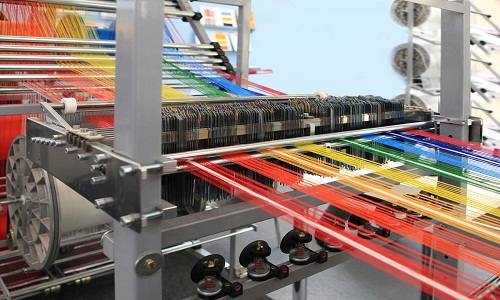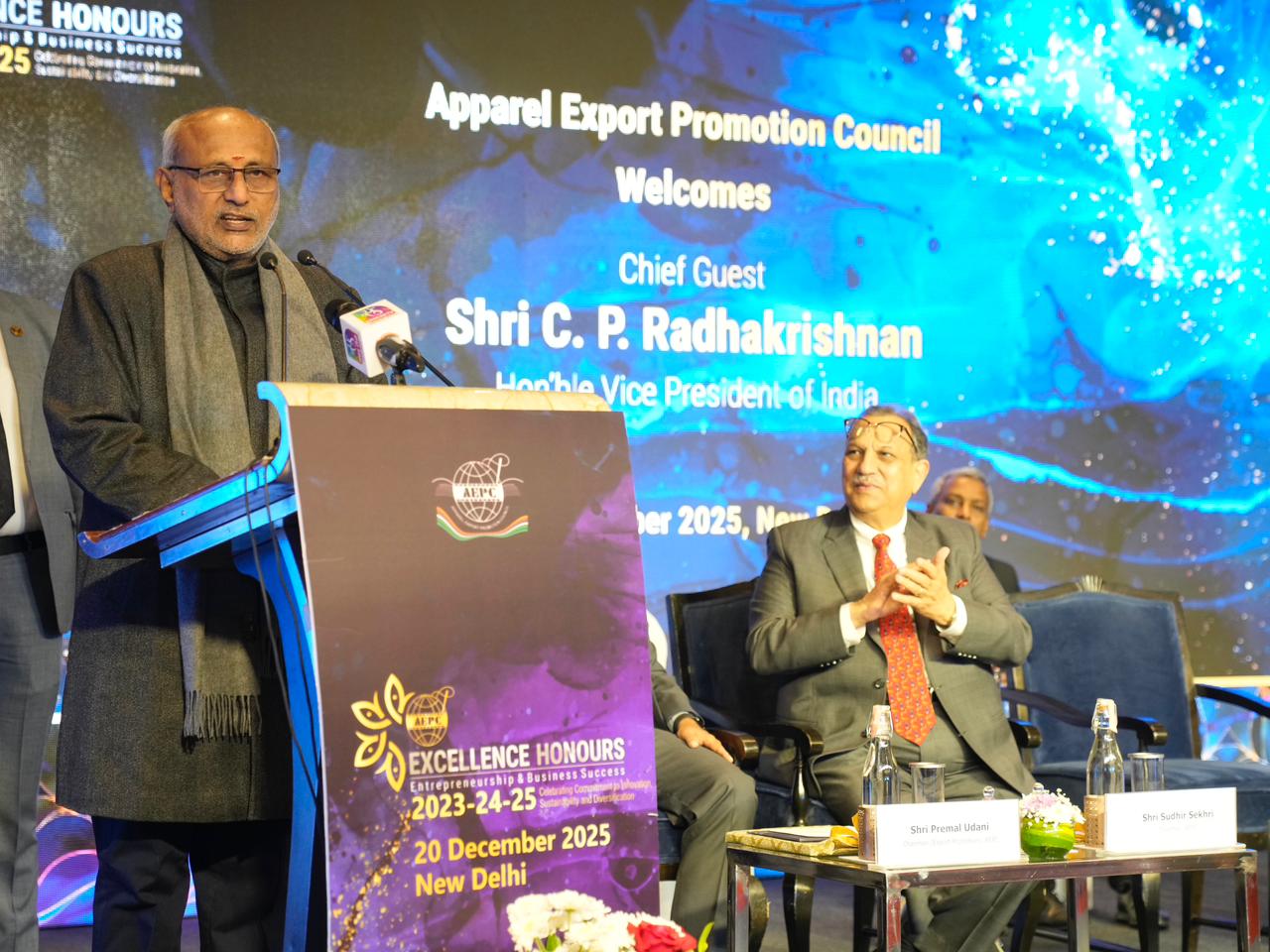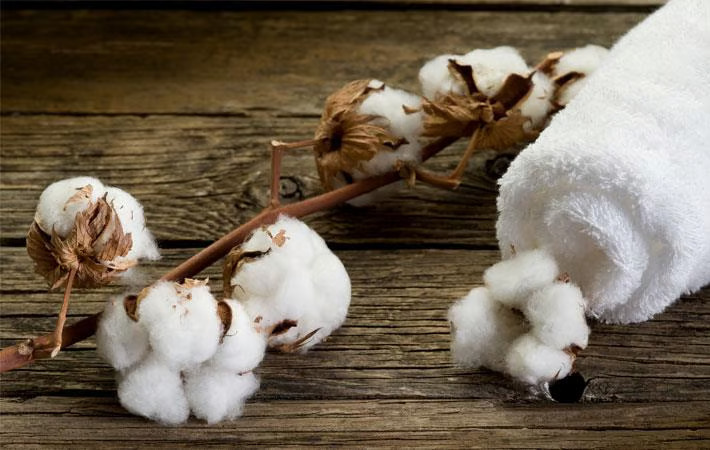FW
China's move to impose duty on US cotton shipments will help India.
India, the world’s second-biggest cotton exporter, is hoping to treble shipments of the fiber to China next year.
So far, despite India’s efforts to grab a bigger piece of the Chinese market, cotton from the United States, the world’s biggest exporter, had held sway.
India is looking to sell 2.5 million to three million bales to China in the next season beginning in October, up from around 8,00,000 bales of expected exports in the 2017-18 marketing year.
India has always managed to grab at least 25 per cent of China’s total cotton imports. China’s total imports are expected to rise 38 per cent in 2018-19 as it needs to shore up depleting domestic reserves.
China produces about 32 million bales of cotton and its textile mills consume around 45 million bales, allowing imports to meet the shortfall. India benefits from geographical proximity to China compared to other competitors. As well as lower freight rates, shipments from India reach China in about two weeks compared to an average of three to six weeks from other suppliers.
During the current 2017-18 year, China is scheduled to import 2.5 million bales of cotton from the United States. Other suppliers include Brazil and Australia.
Melissa, a shoe brand from Brazil, has opened its first store in India.
The store is in New Delhi.
The brand, known for its innovative technology, modern design and organic shapes, has its presence in over 96 countries, including key fashion cities such as New York, London, and Hong Kong.
Melissa is a one of a kind brand, dealing in eco-friendly 100 per cent recyclable shoes, made of specially-developed Melflex plastic. Melissa shoes are fashionable, breathable, hypo-allergenic and flexible.
The brand’s spring/summer 2018 collection revolves around the theme Mapping. At a time when borders are being questioned worldwide, Melissa found the theme for its latest collection in this thought process of bridging territorial gaps worldwide.
The collection is inspired by the fashion of different cultures, where people become local agents of the regions they reside in, transforming and connecting with the region in everyday life. Through this collection Melissa has tried to bring together geographical representations of various regions across the world.
The shoes in the collection are inspired by and made to represent various time periods and places, resulting in a diverse range that has something for everyone. Melissa shoes are the result of design collaborations that include the likes of Jean Paul Gaultier, Thierry Mugler, Vivienne Westwood, The Campana Brothers, Jason Wu, Disney, Karl Lagerfeld and other celebrated designers and artists.
Bangladesh has the potential to become the main supplier of jute to the global car industry.
The industry needs about 1,00,000 tons of jute a year, of which 12,000 tons come from Bangladesh.
The car industry uses the natural fiber to manufacture the interiors of vehicles. Previously, the car industry used glass fiber to manufacture the interiors. But glass fiber is not recyclable or biodegradable, so in 1994 the search for a green alternative began. Jute emerged as the frontrunner. Bangladesh started supplying jute to high-end car brands like BMW, Mercedes-Benz, Volvo and Audi in the early 2000s. The country’s jute is much admired for its high fiber quality.
The use of the natural jute fiber from Bangladesh by global car brands has helped in diversification of jute products. As a result, Bangladesh has the potential to export jute and jute goods worth almost seven billion dollars annually in the next seven years.
But in reality the growth in supply has remained stagnant at five per cent over the last many years. And the unpredictable jute export policy is to blame. For instance, a few years ago, Bangladesh imposed a ban on the export of raw jute from Bangladesh, which left BMW facing a shortage of the natural fiber. Small traders cannot supply jute to car brands directly.
South Korean fibre giant Hyosung is set to foray into the Indonesian textile market where Muslims make up 87 per cent of Indonesia’s population.
This week, Hyosung announced that the company would begin to enter the local market as a global premium textile brand by participating in Indo Intertex, a textile industry exhibition held in Jakarta, Indonesia from April 4 to 7.
Hyosung showcased its yarn and fabrics used in premium garments, sports and leisure fashion items and active wear for Muslims in this exhibition by partnering with a local Indonesian brand.
The brand showcased a premium denim fabric with Creora Fit Square, spandex for denims with global denim brand Lee Cooper and spandex creorafit square for denim. The company introduced Southeast Asian lingerie brand 'Sorella' and Creora Eco Soft-based lingerie and Muslim wear brand with Hyosung's spandex yarn.
The company has been working hard to raise consumers’ awareness of the Creora brand by delivering as per customer expectations for elastic, comfortable and light fabric for Muslim wear. The company has been developing fabric and implementing collaborative marketing with local companies.
Indonesia has a population of about 260 million which ranks fourth in the world. About half of the total population are 24 years old or younger and are sensitive to fashion and trends and there is a high demand for foreign-made clothes, following enhanced economic growth.
The Indonesian government is looking at growing their textile industry by up to 6 per cent annually. Indonesia's apparel market is expected to touch around US$ 18 billion in 2018 and grow by 8.4 per cent annually till 2021.
In a retaliatory move the Chinese Ministry of Commerce has announced plan to impose a 25 per cent tariff on 106 U.S. goods, including agricultural products such as cotton, soybean, corn and beef.
The effect of the Chinese tariff is expected to impact exports valued at around $50 billion from the US.
This move could affect the entire US cotton industry, as China imports a significant amount of US cotton each year, along with other leading importers like Vietnam, Turkey, Indonesia and Pakistan.
The would seriously affect US cotton and agricultural exports and correspondingly affect US farmers averred Darren Hudson, professor and Combest Chair of Agricultural Competitiveness at Texas Tech University. More cotton would likely be sent to Southeast Asia and away from China, he added.
In March, President Trump proposed a 25 per cent tariff on steel imports and 10 per cent on aluminium imports, while exempting some countries. This measure was aimed at protecting US jobs and American innovation and its industry. At that time, the effect on the US cotton industry was not foreseen to be serious as they felt that the Chinese retaliation would target US soybean.
"Slowly but surely, Artificial intelligence (AI) is seeping deep into the textile industry production cycles. Till date, several attempts have been made to quantify something as abstract as fashion but all were in vain. Thanks to the fast changing technology landscape, things are finally able to quantify the complexities of abstracts, such as fashion. And as Ambud Sharma, Founder, Escaro Royale Luxury points out, AI is now helping with not only merchandising decisions but also in fine-tuning the supply chain and creating customised and personalised fashion trends."

Slowly but surely, Artificial intelligence (AI) is seeping deep into the textile industry production cycles. Till date, several attempts have been made to quantify something as abstract as fashion but all were in vain. Thanks to the fast changing technology landscape, things are finally able to quantify the complexities of abstracts, such as fashion. And as Ambud Sharma, Founder, Escaro Royale Luxury points out, AI is now helping with not only merchandising decisions but also in fine-tuning the supply chain and creating customised and personalised fashion trends.
Fashion forecasting

With the exponential increase in data and events pertaining to fashion each season, it is impossible to collate and correlate all statistics to understand future trends. AI systems are now being utilised to correlate worldwide data to forecast trends on what merchandise needs to be produced and in what quantity. The typical variables include colours, patterns, designs and geographic tastes in materials. With access to more data and insights, designers can now take help from the AI platforms to produce accordingly. This saves time and money that was earlier wasted in experimentation. The designers can now be more confident in the sales potential of their merchandise.
Consumer insights
It is important to know your customer, and even more important to know their buying and spending behaviour. There are thousands of digital footprints that we leave behind each day when we engage over the Internet – be it reading an article, reviewing a product or signing up for an event. These footprints are a goldmine for the fashion industry – since it helps in identifying the digital persona of a person in the AI world. Using this info, it is possible to accurately map a person’s digital persona to their potential interests. This is especially amplified when an AI system knows what a person bought and when, thus projecting and reinforcing a potential consumer’s interest in a fashion product through targeted advertising. The power of consumer insights allows in gauging market size, thereby helping brands in ascertaining the quantities to be produced.
Retail intelligence
Retail is complex but can be handled seamlessly using AI. A consumer’s retail interaction, be it in a showroom or on a website is extremely important and hear-worthy. The feedback received in real-time from consumers can be extrapolated to ascertain whether demand is being sufficed and if the consumer is looking for something that isn’t available. Also, real-time digital feedback mechanisms can quantify customer satisfaction, thereby assisting in customer retention. This feedback, if correlated correctly, can be used as a guiding tool for future merchandising and retail dominance. Though this can be done manually, it can be done faster, better, cheaper and more accurately by using the processing capability of an AI platform.
Consumer interaction and engagement
AI-based chat-bots are being used now to seamlessly interact with consumers. These chat-bots learn skills over time by interacting with various sets of customers and they are able to handle most questions and concerns on their own not to mention that they don’t change shifts or get tired like their human counterparts, leading to higher consumer satisfaction. Additionally, the information collected through chat-bots is regularly analysed and correlated by AI central commands for deeper insights about consumer base. Customised and automated messaging systems can keep the consumers abreast with the latest offerings of a fashion brand, thereby keeping the customers engaged through the information that is unique & customised to his/her taste.
Inventory management
There is nothing more frustrating than having inventory that doesn’t sell and not having inventory that sells well. This is where AI-based inventory management systems come to the rescue. These systems understand the velocity of sales, many times global sales, and provide insights into what is selling and how fast. More importantly, they help in providing recommendations on inventory optimisation across markets to ensure that the right product is available in the right market. For sized products, like shoes and apparels, these intelligent platforms provide market-wise recommendation in sizing to ensure that the correct set of sizes are available in applicable markets.
In all, something as abstract as fashion can be more-or-less quantified using AI to the point that it may very well one day be able to make automated design and product decisions for current and future trends. For fashion brands, the potential of AI taking over these day to day decisions is very high and will only increase with time. As digital transactions and interactions increase, and more and more data are produced, brands can only look up to powerful AI platforms with humongous data-crunching capacities to assist them to navigate complex digital waters.
US lifestyle apparel group VF Corporation announced its acquisition of New Zealand-based outdoor and sportswear brand Icebreaker which specialises in products made from Merino wool. Icebreaker is now a wholly owned subsidiary of VF Corp. VF Corporation described the newly acquired brand as an “ideal complement” to its existing SmartWool label, which also offers apparel and accessories manufactured using Merino wool.
VF Corp Chairman, President and CEO Steve Rendle says together, the SmartWool and Icebreaker brands create an advantaged position for VF as a leader in the growing and underpenetrated natural fibre category. Icebreaker was founded by Jeremy Moon in 1995 as a company specialised in manufacturing thermal underwear made from 100 per cent Merino wool. It further expanded to Australia, Europe and the US. Its extensive range of outdoor and sports products are currently sold in over 4,700 stores in 50 countries, distributed through wholesale and retail channels and the company’s e-commerce website.
The brand was a pioneer in the ethical and sustainable production of performance apparel made using natural fibres and purchases its Merino wool from sustainable farms in New Zealand.
Last month, the company announced that it had signed deals to sell Nautica to Authentic Brands Group and acquire performance footwear brand Altra from Icon Health and Fitness.
Second-hand retailer ThredUp's 6th Annual Resale Report revealed that thrifty millennial are now increasingly looking at used clothes and is forecast to spiral up to $44 billion by 2022. The report also notes that 1 in 3 women shopped thrift last year. James Reinhart, CEO of ThredUp says the modern consumer now has a choice between shopping traditional retail or trying new, innovative business models. The closet of the future is going to look very different from the closet of today
ThredUp reported 70 per cent of its users this year were first-time second-hand shoppers and further noted that the secondary retail market is set to grow 24 per cent quicker than the traditional retail market over the next four years. ThredUp is of the view that millennials' resolved their dilemma of giving up their desire to wear trendy fast fashion in favour social and environmental responsibility.
ThredUp's study found millennials were in the age demographics most likely to impulse buy a piece and then stop wearing it after around five times. The major shift in consumer spending — as seen in the report — is that 25 per cent of consumers are consciously planning to spend less at department stores and malls.
This dismal revelation is a worrying factor for fast fashion retailers such as H&M which revealed last week that it is already sitting on $4.3 billion of dead inventory.
ThredUp further reports that 66 per cent of consumers are instead using thrift as a way to buy higher-end brands they would not buy for full price. While off-price retailers such as TJ Maxx and Nordstrom Rack traditionally occupied this space, it appears that consumers have lost interest due to the relatively slow pace of regular retail deliveries.
The second-hand market, on the other hand, has seen a consistent growth in inventory. ThredUp reports that last year it recycled 3,40,000 fast fashion items from H&M, Zara and others. It noted that brands with the best return on investment include Frye, Lululemon and Helmut Lang. Brands that do not do well in the resale market, include Giorgio Armani, Juicy Couture and Mango.
The Cotton Textiles Export Promotion Council (Texprocil) has asked the CBEC Chairman to refund unutilised Input Tax Credit when goods are exported under LUT. The Council, says exporters pointing out the problem being faced by them due to a clarification issued by CBEC on refund of transitional credit. As per the circular, Transitional Credits pertaining to duties and taxes paid under the Central Excise Act 1944 and Chapter V of the Finance Act 1994 cannot be included in the “Net Input Tax” for the purpose of refund of unutilised “Input Tax Credit” in terms of Section 54 of the CGST Act.
This means exporters who had exported under LUT and intend to claim refund of unutilised Input Tax Credit related to the export of goods will not eligible for the refund if the Input Tax Credit is on account of “Transitional Credit”.
Texprocil noted “Transitional Credits are allowed to offset GST liabilities on onward supplies which includes clearance for exports. In other words IGST paid on exports out of Input Tax Credits which includes “Transitional Credits” are allowed as refund when the exporter have exercised the option of “Exports under IGST Refund”. While IGST refund is allowed when the GST is paid out of Input Tax Credit including “Transitional Credits’ there is no reason why the refund should be disallowed in the case of Exports under LUT when the exporter claims refund of unutilised “Input Tax Credit” which is related to Transitional Credit.
GST law permits business units to carry forward their Input Tax Credit and ensures that no ITC is lost while migrating into the new GST regime. By denying refund of Transitional credits the propose of “Transitional Rules” is defeated.
WSN Développement has cancelled the 'Nom de code June' (Code-name June) trade show as they see less potential in a new trade event. The show was due to be held in Paris' Place de la Concorde at the end of June, at the same time as Tranoï along with other fashion events such as the new Man/Woman mixed show and the Parisian version of the Danish trade show CIFF.
Frédéric Maus, joint GM of WSN Développement observes after discussions with several industry professionals and their teams, realised adding a traditional event to the June calendar wasn't the best solution; there are many options in Paris in this period and by adding another one, they risk overtaxing buyers, a situation which isn't to anyone’s advantage.
"Our shows at Porte de Versailles and the Tuileries [in Paris] are leaders in the industry and continue to strengthen; outside of these unmissable events, clients need another kind of year-round, long-term service, catering to their requirements wherever they are exhibiting," he added.
WSN Développement is of the view that online is their best bet as seen in their plans to launch a website which in June, designed as a tool where brands can use to showcase their collections to buyers as well as get a chance to effectively interact with them. The website also open to brands which do not exhibit at the physical trade shows organised by WSN Développement.












